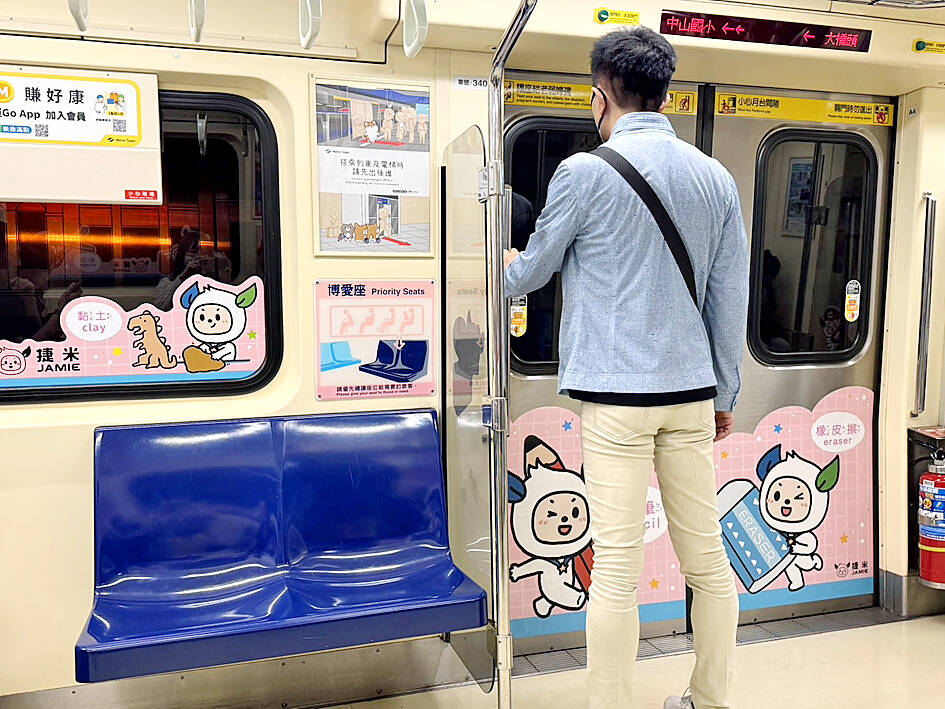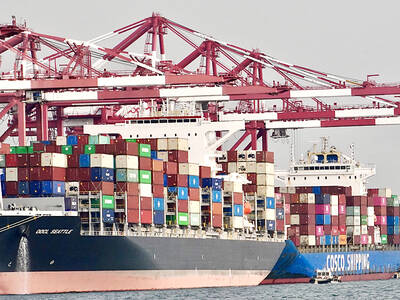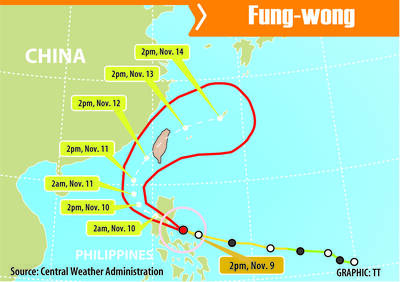The legislature’s Social Welfare and Environmental Hygiene Committee yesterday gave preliminary approval to a proposed amendment to Article 53-3 of the People with Disabilities Rights Protection Act (身心障礙者權益保障法), which would change the term used in Mandarin from “courtesy seat” to “priority seat,” and expand the eligibility to include all people with actual needs.
The committee also passed a motion proposed by Democratic Progressive Party Legislator Liu Chien-kuo (劉建國), which would ask the Ministry of Transportation and Communications and the Ministry of Health and Welfare to design a new sign for priority seats that can be used on buses, trains and Mass Rapid Transit systems nationwide.
The two ministries should launch an awareness campaign of the new policy governing the use of priority seats and public transport operators should support the awareness campaign by broadcasting the new policy on board, the motion says.

Photo: CNA
The current article requires public transportation facilities to set aside priority seats for disabled and elderly people, women and children at a rate of no less than 15 percent of the total seats available. Such seats should be close to the car or cabin doors. The floor between the priority seats and the exits should be flat and without any obstacles, and, if necessary, marked with yield seats warnings, the article says.
Minister of Health and Welfare Chiu Tai-yuan (邱泰源) said that changing the name from “courtesy seat” to “priority seat” reflects the spirit of love and inclusiveness associated with the seats.
It sends a positive message about mutual support and care within society, he added.
The Ministry of Transportation and Communications said that the relevant sub-regulations would be revised within six months following the promulgation of the amendment.
Passenger disputes over priority seats on public transportation have been reported frequently, sparking a nationwide debate about who qualifies to sit in them. Most of the cases involved elderly people asking young people to give up their seats.

The Central Weather Administration (CWA) yesterday said it expected to issue a sea warning for Typhoon Fung-Wong tomorrow, which it said would possibly make landfall near central Taiwan. As of 2am yesterday, Fung-Wong was about 1,760km southeast of Oluanpi (鵝鑾鼻), Taiwan’s southernmost point, moving west-northwest at 26kph. It is forecast to reach Luzon in the northern Philippines by tomorrow, the CWA said. After entering the South China Sea, Typhoon Fung-Wong is likely to turn northward toward Taiwan, CWA forecaster Chang Chun-yao (張峻堯) said, adding that it would likely make landfall near central Taiwan. The CWA expects to issue a land

Taiwan’s exports soared to an all-time high of US$61.8 billion last month, surging 49.7 percent from a year earlier, as the global frenzy for artificial intelligence (AI) applications and new consumer electronics powered shipments of high-tech goods, the Ministry of Finance said yesterday. It was the first time exports had exceeded the US$60 billion mark, fueled by the global boom in AI development that has significantly boosted Taiwanese companies across the international supply chain, Department of Statistics Director-General Beatrice Tsai (蔡美娜) told a media briefing. “There is a consensus among major AI players that the upcycle is still in its early stage,”

The Central Weather Administration (CWA) yesterday said it is expected to issue a sea warning for Typhoon Fung-wong this afternoon and a land warning tomorrow. As of 1pm, the storm was about 1,070km southeast of Oluanpi (鵝鑾鼻), Taiwan’s southernmost point, and was moving west-northwest at 28 to 32kph, according to CWA data. The storm had a radius of 250km, with maximum sustained winds of 173kph and gusts reaching 209kph, the CWA added. The storm is forecast to pass near Luzon in the Philippines before entering the South China Sea and potentially turning northward toward Taiwan, the CWA said. CWA forecaster Chang Chun-yao (張峻堯) said

‘SECRETS’: While saying China would not attack during his presidency, Donald Trump declined to say how Washington would respond if Beijing were to take military action US President Donald Trump said that China would not take military action against Taiwan while he is president, as the Chinese leaders “know the consequences.” Trump made the statement during an interview on CBS’ 60 Minutes program that aired on Sunday, a few days after his meeting with Chinese President Xi Jinping (習近平) in South Korea. “He [Xi] has openly said, and his people have openly said at meetings, ‘we would never do anything while President Trump is president,’ because they know the consequences,” Trump said in the interview. However, he repeatedly declined to say exactly how Washington would respond in